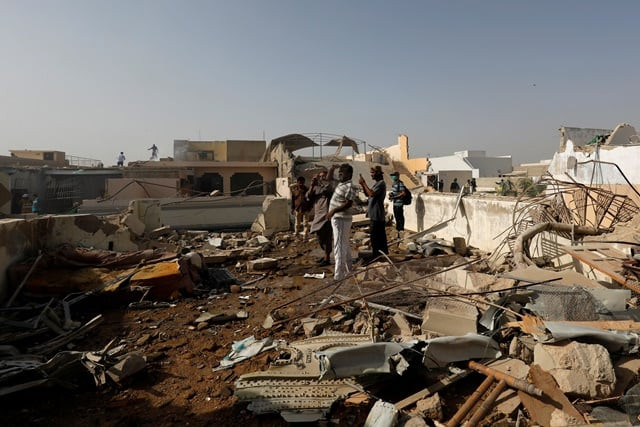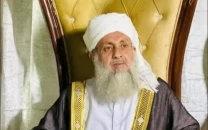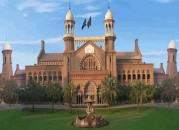KU lab, PDMA continue crash victims’ identification
46 bodies have been identified so far; DNA testing to take six to eight days

PIA Airbus crash site. REUTERS/File
Earlier, the Provincial Disaster Management Authority (PDMA) had stated that it had also begun the process of identifying the deceased through forensic odontology.
Meanwhile, the authorities confirmed that 46 bodies had been identified and handed over to the respective families so far.
The ICCBS director insisted that the KU laboratory was equipped with all the necessary resources for DNA testing, and his team was working around the clock to complete the process.
According to Dr Choudhary, 12 DNA matches have been confirmed thus far and Sindh health minister Dr Azra Fazal Pechuho was in constant contact with the ICCBS regarding the identification process. “We are a top-class laboratory of the provincial health department and are working for a national cause,” added Dr Choudhary.
Expediting the process
Meanwhile, Sindh Chief Minister Syed Murad Ali Shah also visited the Sindh Forensic DNA and Serology Laboratory at KU to ask the team to expedite the DNA identification process.
“The families of the passengers who died in the plane crash are in severe pain because not only have they lost their loved ones but they are also unable to identify their bodies and perform their last rites,” he said. “This pain will pierce their hearts for the rest of their lives but we can mitigate it by handing over the bodies after identifying them.”
The CM was told that 15 bodies had been identified through DNA testing, while two DNA reports were rejected due to tagging issues. At this, he directed the district administration to resolve the matter and identify the bodies as early as possible.
Issuing regulations
Visiting the Edhi and Chhipa morgues, Karachi commissioner Iftikhar Shallwani, meanwhile, issued regulations for the proper identification and handover of the bodies.
Asking the relevant officers to ensure that the grieving families faced no difficulties in receiving the bodies of the deceased passengers, he directed that they should be given all possible facilitation in the matter.
According to a notification issued by the commissioner, identification arrangements have been made at the Edhi and Chhipa morgues in Sohrab Goth and Nursery, respectively. Furthermore, assistant commissioners and mukhtiarkars have been appointed for the necessary procedures, while the relevant deputy commissioners have been told to monitor the arrangements.
A designated SSP will have the responsibility to inform the families as each body is identified, with the bodies being handed over after verification by the police and medico-legal officer.
Forensic odontology
On Tuesday, PDMA dental investigator Dr Humayun Taimoor had said that the authority had begun identifying the deceased through forensic odontology.
Addressing a press conference, he said that this method provided swift results without room for error.
Forensic odontology – or dental examination – relies on the shape and treatment of the victim’s teeth as well as their dental records.
According to him, by Tuesday, the families of 21 victims had provided dental records and the data will be used to examine the bodies. He had appealed to the families of the victims as well as their respective dentists to provide dental records of the deceased as soon as possible.
Elaborating further, Dr Taimoor had referred to the three primary scientific methods used for identifying disaster victims as listed in the Interpol’s Disaster Victim Identification Guidelines – DNA testing, odontology and fingerprints.
However, the first was time-consuming and the third is inapplicable due to the condition of the bodies, said Dr Taimoor. Forensic odontology was used earlier as well to identify the victims of the PIA plane crash near Havelian in 2016, he informed.
Dr Taimoor had informed that this work is being carried out on the directives of the federal government and with the collaboration of the provincial government, which had provided mobile units equipped with modern facilities for the identification process.

















COMMENTS
Comments are moderated and generally will be posted if they are on-topic and not abusive.
For more information, please see our Comments FAQ